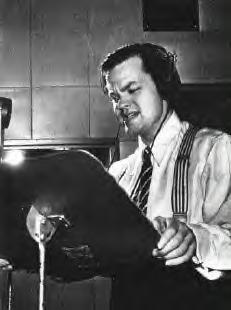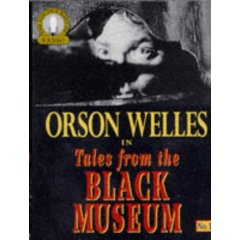


CLICK TO DOWNLOAD QUICKTIME PLAYER
|
First show date: 01/01/1952 |
|
Last show date: 30/12/1952 |
|
Number of shows: 52 |
![]()
![]()
![]()
synposis
|
The Black Museum was a 1951 radio crime drama program produced by Harry Alan Towers for the BBC and based on real-life cases from the files of Scotland Yard's Black Museum. Ira Marion wrote the scripts, and music for the series was composed and conducted by Sidney Torch. Orson Wells was both host and narrator for stories of horror and mystery based on Scotland Yard's collection of murder weapons and various ordinary objects once associated with historical crime cases. The show's opening began, “The Black Museum, a repository of death. Here in a grim, stone structure on the Thames which houses Scotland Yard is a warehouse of homicide, a very strange room where everyday objects... of a woman’s shoe, a tiny white box, a quilted robe... all are touched by murder.” Walking through the museum, Welles would pause at one of the exhibits, and his description of an artifact served as a device to lead into a tale of terror or a brutal murder. With the story themes deriving from objects in the collection, the 52 episodes had such titles as "The Tartan Scarf," "A Piece of Iron Chain," "Frosted Glass Shards" and "A Khaki Handkerchief.". An anomaly to the series as well as the purpose of the museum itself was an episode called "The Letter". It was not a murder story, but a story about forgery. In America, a program of similar scope, using many of the same picked cases as The Black Museum, and nearly mirroring its broadcast run was broadcast by NBC called Whitehall 1212. The two shows were different in the respect that while Whitehall told the story of a case entirely from the point of view of the police starting from the crime scene, The Black Museum was more heavily dramatized and played out scenes of the actual murders and included scenes from the criminal's point of view.
|
episodes
|
![]() Copyright(C) 2007
- 2020. All rights reserved.
Copyright(C) 2007
- 2020. All rights reserved.